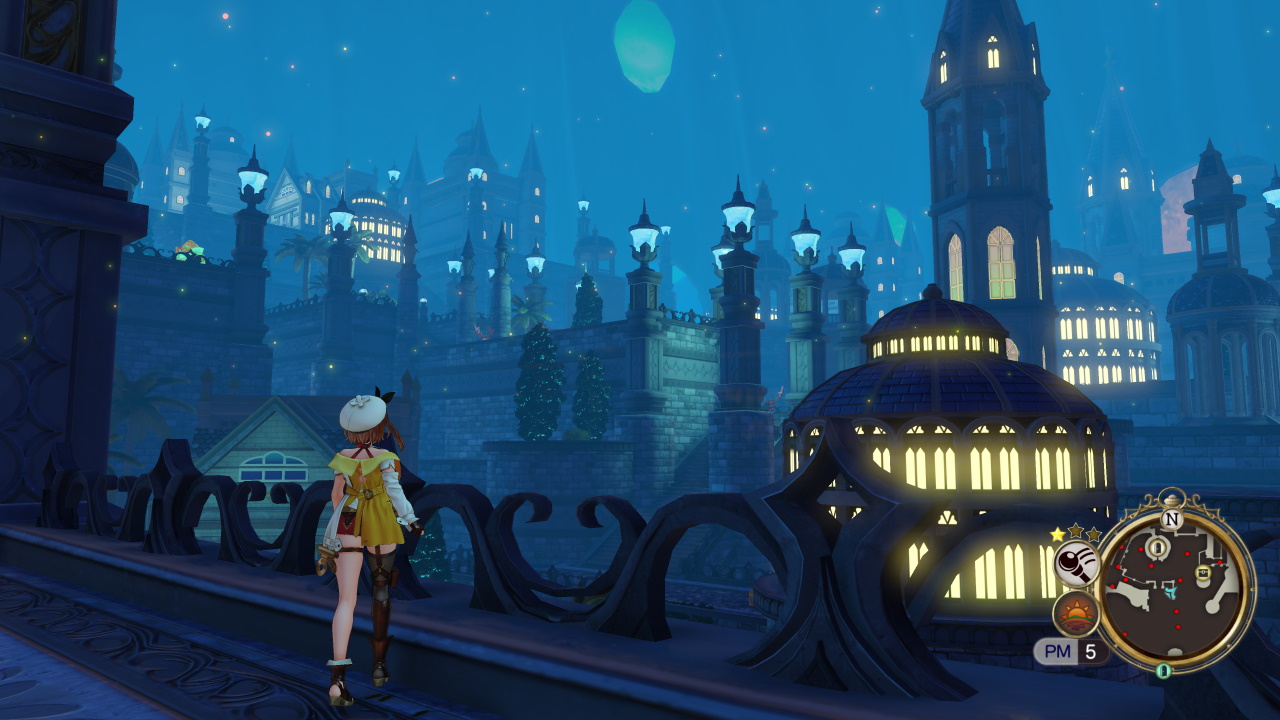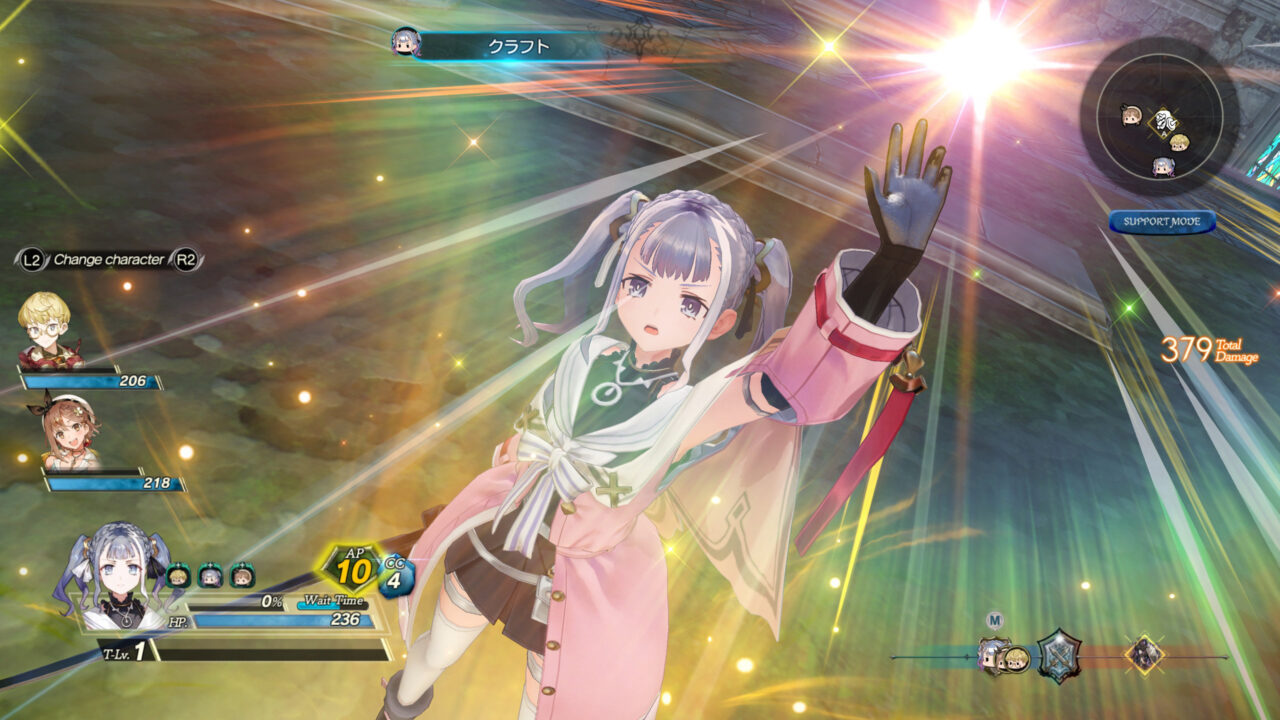Hot off the success of Atelier Ryza: Ever Darkness & The Secret Hideout, developer Gust sets their ambitions higher with this expansive sequel. Taking place three years after the original game, Atelier Ryza 2: Lost Legends & The Secret Fairy‘s titular protagonist finds herself falling into an uneventful cycle of daily life on her hometown island of Kurken. After receiving a request from her old friend Tao to join him for alchemy-related studies in Ashra-am Baird, the nation’s Royal Capital, Ryza is also tasked with uncovering a mysterious artifact by Kurken’s most influential family. Now with two grand reasons to set out from her cozy hometown, Ryza makes way for the capital in hopes of uncovering the lost secrets of alchemy and revealing the ancient history of their world.
Atelier Ryza 2 looks to be a clear step up from the original in both art design and technical prowess. The Royal Capital is incredibly large, dwarfing almost the entirety of Kurken Island with its central districts alone. It’s easy to get lost in the city, yet with the full map and points of interest now clearly labeled, players should be able to regain their bearings swiftly. Ashra-am Baird feels modern, sprawling, familiar, and equally mysterious. The city is populated with countless citizens wandering about, giving it a real sense of life that helps evoke being a farm girl from a backwater island suddenly met with towering buildings and an endless sea of strangers passing by.
Discovery and exploration were encouraged in the previous game, yet now they’re a key part of progression. Surrounding Ashra-am Baird are numerous ruins from the distant past. As Ryza and friends explore these ruins, new systems unfold that revolve around collecting information at these ancient, dilapidated remnants of the past. Thanks to a trusty new tool, Ryza can peer into moments of history and learn the purpose of the ruins via discussion with people of the time, jotted notes, and fragmented memories of the world. The fragmented notes and vague suggestions in this new system are integral to progression and will have players diving deeper into dungeons than ever before. It feels reminiscent of Atelier Lulua‘s “Alchemyriddle” system, which offered clues and hints on creating items and progressing through the world.

You see these new tools and methods of exploration through wandering the world and via spelunking through ruins. Ryza can now swim through water and climb along vines to reach higher places, which adds a level of verticality to the already expanded map design. Special tools allow Ryza to swing over gaps, and mounts can make exploration and travel a breeze. While new tools make aimless wandering more fun, players gain access to fast travel far earlier than the original game. This too is expanded and can be done from anywhere in the world. A simple trip back to the Atelier to dump off materials or make a new tool no longer feels like an out-of-the-way venture, as returning to previously accessed locations is just a button press away.
Learning old recipes, unlocking new abilities, and increasing Ryza’s available toolset happens through a new Skill Point system. All of Ryza’s old item recipes are greyed out, but a simple press of a button and SP exchange allows her to recall the recipe and figure out a way to use the new cauldron. Prior features such as Recipe Morph are available from the start, while others may be tied to ruin exploration or have a hefty SP cost. Ryza can easily regain SP by crafting new items, wandering ruins, solving mysteries, and progressing the story. Alchemy has a stronger presence in the gameplay loop than before, and the alchemy system remains similar to the first with a few new upgraded tweaks.
Alchemy is more smoothly integrated into the battle system this time around. In the previous game, Core Charge (CC) was a finite resource required to use items in battle. CC had to be recharged at rest areas or back at the atelier. This often led to curtailed trips to recharge CC, which impacted pacing at times. In Atelier Ryza 2, CC is easily gained in combat. Any CC not used in combat is added to your CC bottle, allowing players to utilize items in the field without having to run back to town. The loop of charging CC in battle to use on items both in and out of combat is a smart choice and helps ensure that players more freely use items in battle. Also new is the ability to use multiple items in succession. This can give you the edge in buffing the party, healing an ally, and unleashing a large bomb all in the same sequence. Some items may even chain together and activate a powerful follow-up skill. This is a step up from the original game and marries alchemy, exploration, and combat together more tightly than ever before.

Combat has seen a significant upgrade this time around. With Atelier Ryza‘s shift to a real-time tactical battle system, battles are intense and incredibly satisfying. The original game’s Tactics Lvl and AP system retain the feel of the original, though they’re notably upgraded. The Tactics Lvl system is similar in its previous function, allowing players access to longer combos and stronger boosts to skills. Yet, in Atelier Ryza 2, it’s also the primary method of restoring CC. It differs from the original in that AP is no longer spent at once to increase the Tactics Lvl. Instead, using skills consumes AP, which is then converted into your Tactics Gauge at the bottom of the screen. You are heavily encouraged to rack up AP and chain skills together in long and flashy combos. Returning from the original are Action Orders, requests in combat from your allies to perform specific tasks such as dealing physical or magic damage, attacking with items, or increasing stats in battle. They’re now stronger, easier to understand, and often trigger back to back.
The battle system is proving itself to be extremely promising, as combat is always active with the new changes. Skills are now tied to face buttons and can be chained together to keep the action flowing. Additionally, while waiting for a character’s turn with the updated and easier to understand ATB-esque system, players can easily swap to another character who may be able to act sooner, or wait out an attack from an enemy for a chance to perform a Perfect Guard. The new defensive system encourages swapping to targeted characters and blocking incoming attacks with the right timing. Doing so grants bonus AP to help keep the combos flying and the Tactics Lvl growing. With combat taking place on larger battlefields split into zones, battle is more mobile and active. As attacks from other zones may be targeted at your sides and rear, keeping a close eye on the battlefield is highly encouraged. The combat feels like a mixture of Gust’s best battle systems with touches of Mana Khemia and Ar tonelico 2 while elevating the original’s fast-paced tactical action.
The quality of life improvements, new mechanics in exploration and battle, expanded alchemy system, and broader scope mean Atelier Ryza 2 is shaping up to be not only the best title in the series, but quite possibly Gust’s best game. While my time with the title has been brief so far, the game is showing strong promise. Stay tuned for our full review of Atelier Ryza 2: Lost Legends & The Secret Fairy when the game launches on January 26th, 2021 on PS4, PS5, Nintendo Switch, and Steam.



